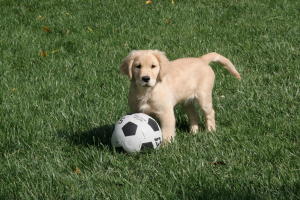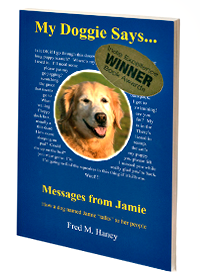The Oregonian had an interesting article yesterday titled Give pets their say. The idea is that an “animal communicator,” or “pet psychic” might be able to understand some things about your dog’s behavior by tuning-in telepathically to your dog’s messages. The Oregonian experimented with three “communicators” and found that all three seemed to be getting some relevant information about the subject’s (Levi’s) past. It’s pretty interesting, because Levi was a Hurricane Katrina survivor.
I’m a little skeptical about the “telepathic” part, but I’m not a total disbeliever. I believe dog communication is like intuition. In fact, it is largely intutive. There is a continuum of intuitiveness. Some people are very intuitive — very aware of the things around them. Others are not. Part of the process of developing your dog communication skills is to develop your intuition for your dog’s behavior and body language.
Does a well developed intuition approach telepathy? I’m not sure, but I had an experience once that made me wonder. My wife and I hired an “animal psychic” to meet with our four pets: Tiki, the Amazon parrot; Melody, a Golden Retriever; Renne a mixed breed dog; and Swami, a magnificent male cat. Most of the “messages” sounded to me like the palm reader at a carnival. “There’s been a change in your life.” “Or, something is bothering you.” Sort of generic.
But, when the psychic came to Tiki, the Amazon parrot, she said, “Tiki told me she has ridden down the hallway on Melody’s (the Golden Retriever) back.” This blew us away, because it was absolutely true, and we didn’t think there was any way the psychic could have known it.
This photo is from My Doggie Says… It’s a picture of Tiki, but the dog is Jamie, who arrived at our house after Melody died. In the photo, Jamie is saying, “Hurry up, Tiki, and drop your toast, so I can finish it up.”
Whether it’s telepathy or good instincts, it’s fun to work at being a better dog-listener.











